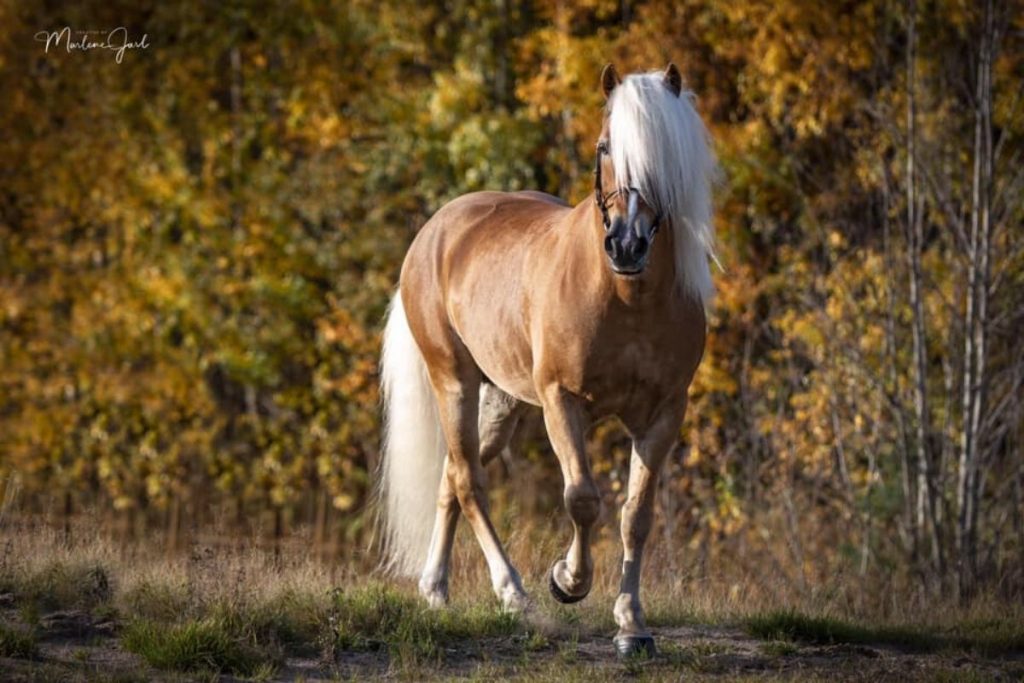When you look at a horse, one of the first things that will catch your eye are the flowing mane and the beautiful tail. We know that other animals like cats and dogs have sensitive tails that they don’t like to have pulled. Are horse manes and tails delicate like that?
Do horses have any feeling in their mane and tail? Horses don’t have any feeling in the hair of their mane and tail. Both structures are made of hair that is no more sensitive than the hair on top of your head. Their manes and tails can be brushed, combed, and even trimmed, just like your hair.
Just like a trip to the barber doesn’t hurt your hair, horse manes and tails don’t feel anything. (Unless you pull on them). Let’s find out why that is.
What is the Purpose of a Horse’s Mane?
Wild horses don’t have a long mane. The short, stiff mane in wild horses most likely serves to keep the neck vertebrae warm. It may also protect stallions when they fight because fighting stallions bite each other on the back of the neck. Wild equines such as primitive horses, zebras, and donkeys also have short, scrubby manes.
Because mustangs are feral horses descended from domestic stock, their manes don’t count.
The long, flowing manes we see today are a result of selective breeding. We don’t know precisely when or why people started reading horses with longer manes. Some people think it was to provide a better handhold for riders. Others argue that it was just for their appearance. However it started, you can’t deny that a horse with a long, flowing mane looks majestic.

Horse Tails
Horse tails are a little different from manes. Besides the long flowing hair, horses do have a short, bony tail. This tail is called the dock. The dock has just as much feeling as any other body part. Horses can swish the dock back and forth to keep away flies. Wild horses probably had longer tail hair than zebras or donkeys, but not the great lengths that we see on some horses today.
The long, flowing hair from the tail is called the skirt. The length of the skirt depends on some different factors. Genetics is one of those factors. But so is the discipline the horse works in. Some disciplines, like dressage and draft horse shows, keep the tails trimmed or braided very short. Friesian, Arabian, Saddlebred, and Gypsy Vanner horses are breeds with tails that can grow extremely long.
Like long manes, long tales are genetic. Also, like manes, humans have bred horses for beautiful flowing tails for centuries.
Mane and Tail Care
Since the hair can grow so long, manes and tails require some extra attention. Extreme manes and tails are usually kept braided to protect them. The braids keep the hair up off the ground and protected from getting dirty or tangled. To further protect the hair, the braids are often wrapped.
Mane braiding gets a little more complicated. Since the main is a strip of hair running down the ridge of the neck, a single braid does not often work. Manes are frequently worked into a series of 20 to 30 braids that run down the neck. In other cases, the main may be woven into a French braid that runs the length of the neck. Fancier braids are used in some shows, as well.
At the other extreme, manes and tails are cut very short to keep them out of the way. Mane trimming is called roaching. It is common in active riding disciplines, like calf roping or polo, where the mane might get in the way. Bobbed tails are less common. When writers want a shorter tail, the tail skirt is usually braided and folded up to keep it out of the way. Since horses use their tails for fly protection, braiding instead of cutting leaves the horse with the flyswatter once the event is over and the tail is unbraided.
If a mane or tail has been cut extremely short, it can take over a year for the hair to grow back. The slow regrowth is the reason why manes and tails are usually braided instead of trimmed to keep them out of the way. Braids keep the hair out of the way, but you can take them out when you want to. Cutting isn’t forever, but it takes a long time before the mane grows back to full length.
Mane and Tail Care Tips
If you’d like to grow longer mane or tail for your horse, here are some handy tips. Be aware that these tips work best with horses that are genetically able to produce for mane or tail. If your horse is one of the long-tailed breeds mentioned above, these tips will help you get the most from its genetics.
On the other hand, some horse breeds don’t grow long tails. For instance, some Appaloosas are called “rat-tailed” because of the thin, short hair that their tails grow. If your horse is from one of these breeds, there’s not much you can do to help it grow a better tail.
- Protect what you’ve got. Manes and tails grow very slowly, so it’s crucial to protect what’s there. Be careful not to snag any hairs or do anything else that would pull her out and reduce what’s already there.
- Keep it braided. Hair is less likely to get snagged or broken if it safely tucked up in a braid. Keep the mane and tail in a tidy braid to protect it further.
- Feed it right. Make sure your horse gets enough protein, vitamins, and fatty acids in its diet. Proper nutrition is crucial to luxurious hair growth.
- Brush and clean weekly. Once per week, unbraid the hair, comb it, and wash it.
- Condition it, too. Add a mane-and-tail conditioner before you re-braid the hair. Some conditioners should be left in; others rinse out. Check the bottle for directions.
- Keep itches away. Make sure your horse’s skin is clean but not dried out. Check for parasites, too; pinworms can make a horse itch. When your horse is itchy, it will rub its mane or tail on posts and trees. This can break or even pull out hair.
- Be careful with tangles. Start detangling from the bottom up, and never yank on the tangles – that pulls out hair!

Faking It
If you’d like to show off a horse with a long, beautiful tail and your horse isn’t there yet (or can’t get there at all), there’s another option – the fake tail. Also called “switches,” “extensions,” and “tail wigs,” fake tails give your horse the appearance of a lush, full tail. You can get extensions made from real horsehair or various synthetics. If you are showing your horse, make sure to check the rules. Some shows forbid fake tails.
If you are in a parade, rodeo grand entry, or another purely cosmetic event – the sky’s the limit! You are free to put on extensions that match your horse’s hair or extensions in wild, flashy colors. Adding a tail extension can really bring out the style in your horse.
Conclusion
Horse manes and tails are patches of long hair that have been made longer through selective breeding. This hair doesn’t have any feeling, and it doesn’t serve any purpose other than to look good. Some horses can grow exceptionally long manes and tails, while others are limited in what they can do.
